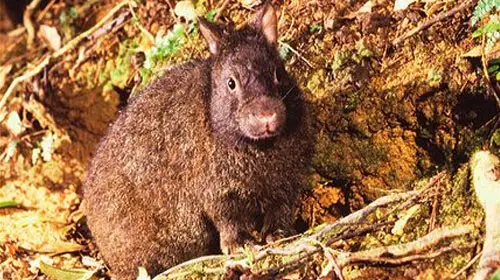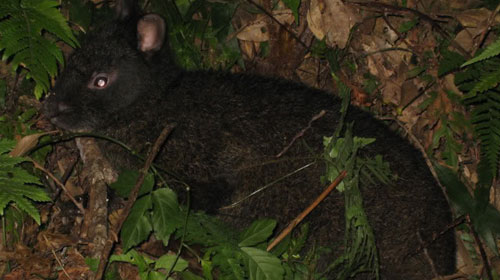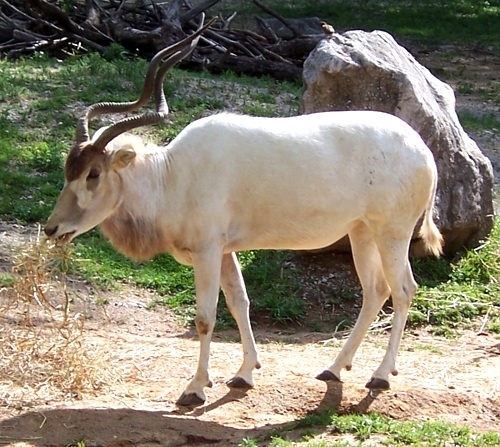Amami rabbit
The Amami rabbit is a Japanese national treasure but even so this elusive rabbit is mostly unknown even to the population of Japan. Reason for the Amami rabbit not being very well known could be down to the fact that it can only be found on two islands in southern Japan, Amami and Tokuno islands. There is thought to be only around 3000 – 5000 Amami rabbit’s left on these islands with the island of Tokuno having the smaller population of around 500 or so.
Currently listed as endangered the Amami rabbit population is in decline for two reasons; habitat loss due to human expansion and loss of numbers due to predators that have been introduced to the islands from outside sources.

Out in the daylight, truly a rare sight
This stocky rabbit is considered as a living fossil among scientists due to the fact that it more resembles the rabbit’s common ancestors than other species of rabbit that are around today. Features such as small stocky limbs with over-sized claws and physical characteristics differing from other rabbits in such ways as smaller eyes/ears and a longer pronounced snout set the Amami rabbit aside from its relatives and make it easily distinguishable.
The Amami rabbit’s keep away from populated areas and farmland and prefer a woodland habitat that has matured and is a fair distance from humans and other predators. Although it was commonly thought that these dark furred rabbits preferred old, mature forests recent research has found that the preferred habitat actually seems to be that of younger forests that border of much more ancient forests.

Roaming the night
Predominently a solitary creature the Amami rabbit’s tend to spend most of their time with only themselves for company and spend their days sleeping in underground lairs or any sheltered crevices. The Amami rabbit’s are nocturnal so are active throughout the night where they will spend most of their time looking for food. The preferred diet of the Amami rabbit is that of grass, fruit and in the winter, acorns.
The female Amami rabbit’s take great care of their young and this occupies most of their time due to the fact that they usually birth twice a year, each time producing 2 or 3 offspring. The mother Amami rabbit will keep her young in her lair and seal the lair whenever she isn’t around ensuring her young are safe from predators.


